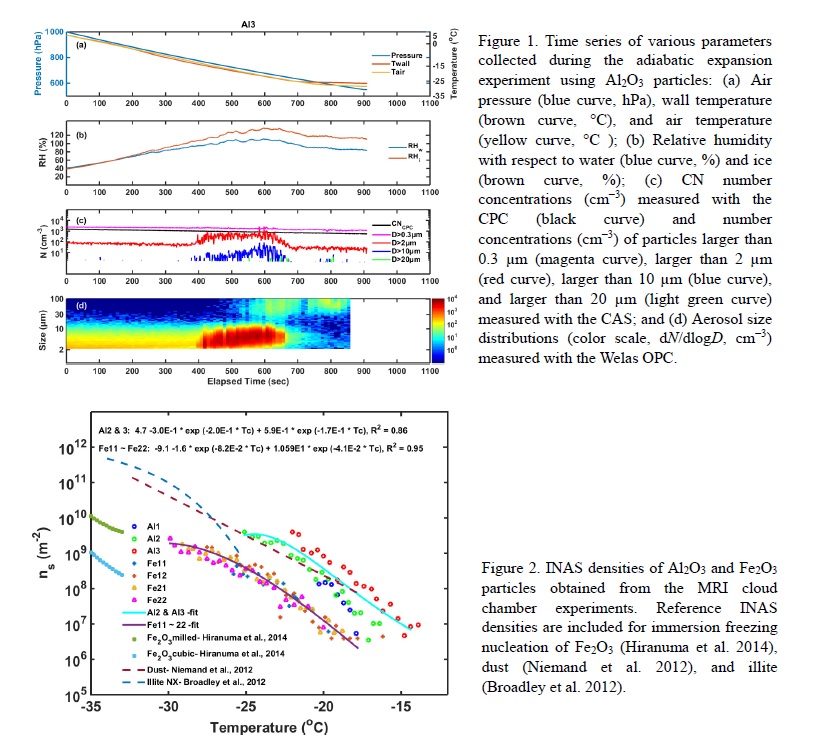Graphical Abstract
Kuo, T.-H., M. Murakami, T. Tajiri, and N. Orikasa, 2019: Cloud condensation nuclei and immersion freezing abilities of Al2O3 and Fe2O3 particles measured with the Meteorological Research Institute's cloud simulation chamber. J. Meteor. Soc. Japan, 97, 597-614.
https://doi.org/10.2151/jmsj.2019-032
Graphical Abstract with highlights
Plain Language Summary: Surrogates of ambient aluminum oxide and iron oxide particles, which have been observed frequently and in high concentrations in the atmosphere and are thought to influence aerosol–cloud interactions, were investigated for their physico-chemical properties such as their size distribution and abilities to act as CCN and INPs, using the Meteorological Research Institute’s (MRI) cloud simulation chamber and an array of aerosol instruments.
Highlights:
- Hygroscopicity parameter (κ-value) of Al2O3 and Fe2O3 particles ranged from 0.01 to 0.03.
- In the cloud simulation chamber experiments, Al2O3 and Fe2O3 particles continuously nucleated ice crystals via immersion freezing at temperatures below −14°C and −20°C, respectively.
- INAS density of Al2O3 was 4 × 109 m−2 at −23°C and was one or more orders of magnitude greater than that of Fe2O3. INAS densities of both metal oxides were comparable to those of surrogates of mineral dust and other atmospheric INPs.
- Simultaneous CFDC-type INC measurements showed considerably smaller INAS densities for both metal oxides, suggesting that only a portion of the ice nucleation sites can be activated in the CFDC-type INC when their nucleation rate is low.







